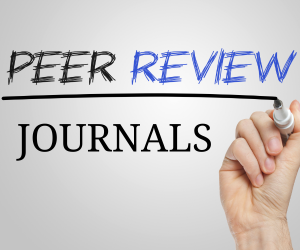CO-RELATION OF ENDOMETRIOSIS WITH PSYCHOSOCIAL WELL-BEING AND COMORBIDITIES–AN OVERLOOKED SITUATION
DOI:
https://doi.org/10.48047/HM.V11.I2.2025.38-42Abstract
Endometriosis is a persistent disease fueled by estrogen that leads to chronic inflammation and affects roughly 15 to 20% of women experiencing infertility worldwide. In Pakistan, however, the condition is frequently overlooked because of social stigma, misconceptions about its symptoms, and widespread ignorance. This investigation aimed to explore the social and emotional burdens borne by women living with the disease, their understanding of it, and their adherence to management plans. We circulated a questionnaire to 20 women with verified diagnoses and compared their answers to those of 30 women without the disease. The results were revealing: only 30% of the patients had come across the term “endometriosis” before receiving their diagnosis. The emotional toll was striking: 65% reported feelings of stigma and psychological strain, 75% were navigating infertility, and 65% confronted some form of family or social prohibition. Notably, the unmarried women reported infertility at a higher rate (83.3%) compared to their married counterparts (62.5%). Although 80% of the patients expressed a preference for medical management, a quarter had not approached a healthcare provider at all. Emerging evidence indicates that exposure to endocrine-disrupting environmental chemicals—such as parabens and bisphenol A—together with certain genetic susceptibilities, may contribute to the disease’s onset.The hypothalamic-pituitary-adrenal axis is also impacted by the inflammatory response linked to chronic pain, which results in increased levels of cytokines like TNF-α, IL-6, and IL-8. This may account for the increased incidence of anxiety and depression in patients. In order to decrease diagnostic delays and enhance the quality of life for women with endometriosis, this study emphasizes the necessity of a multidisciplinary approach to diagnosis and management in addition to greater public awareness.
Downloads
References
Hayat, K., Chaudhary, A., Batool, Z., & Mahmood, B. (2025). The Social Stigma of Infertility Causes & Consequences. Review Journal of Social Psychology & Social Works, 3(1), 44-56.
Gupta, D., Hull, M. L., Fraser, I., Miller, L., Bossuyt, P. M., Johnson, N., … & Cochrane Gynaecology and Fertility Group. (1996). Endometrial biomarkers for the non‐invasive diagnosis of endometriosis. Cochrane Database of Systematic Reviews, 2016(4).
Keyhan, H., Arbabi Bidgoli, S., & Mehdizadeh Kashi, A. (2016). Increased risk of endometriosis by long term exposure to xenoestrogens: A case control study in Iranian women. Journal of Pharmaceutical & Health Sciences, 4(1), 79-86.
Seear, K. (2009). The etiquette of endometriosis: stigmatization, menstrual concealment and the diagnostic delay. Social science & medicine, 69(8), 1220-1227.
Liaqat, I., Jahan, N., Lone, K. P., Pakstis, A., & Taylor, H. S. (2013). Genetic polymorphisms associated with endometriosis in Pakistani women. Journal of Endometriosis and Pelvic Pain Disorders, 5(4), 134-143.
Possover, M., Andersson, K. E., & Forman, A. (2017). Neuropelveology: an emerging discipline for the management of chronic pelvic pain. International neurology journal, 21(4), 243.
Wang, Y., Li, B., Zhou, Y., Wang, Y., Han, X., Zhang, S., … & Ouyang, L. (2021). Does endometriosis disturb mental health and quality of life? A systematic review and meta-analysis. Gynecologic and obstetric investigation, 86(4), 315-335.
Downloads
Published
Issue
Section
License
Copyright (c) 2025 Arfa Batool, Shaafiah Nadeem, Ayesha Hijab, Amtul- Rafay Sami, Shanzay Mustafa, Samahir Khalid, Misbah Hijab, Farah Naz Tahir (Author)

This work is licensed under a Creative Commons Attribution 4.0 International License.
You are free to:
- Share — copy and redistribute the material in any medium or format for any purpose, even commercially.
- Adapt — remix, transform, and build upon the material for any purpose, even commercially.
- The licensor cannot revoke these freedoms as long as you follow the license terms.
Under the following terms:
- Attribution — You must give appropriate credit , provide a link to the license, and indicate if changes were made . You may do so in any reasonable manner, but not in any way that suggests the licensor endorses you or your use.
- No additional restrictions — You may not apply legal terms or technological measures that legally restrict others from doing anything the license permits.
Notices:
You do not have to comply with the license for elements of the material in the public domain or where your use is permitted by an applicable exception or limitation .
No warranties are given. The license may not give you all of the permissions necessary for your intended use. For example, other rights such as publicity, privacy, or moral rights may limit how you use the material.







